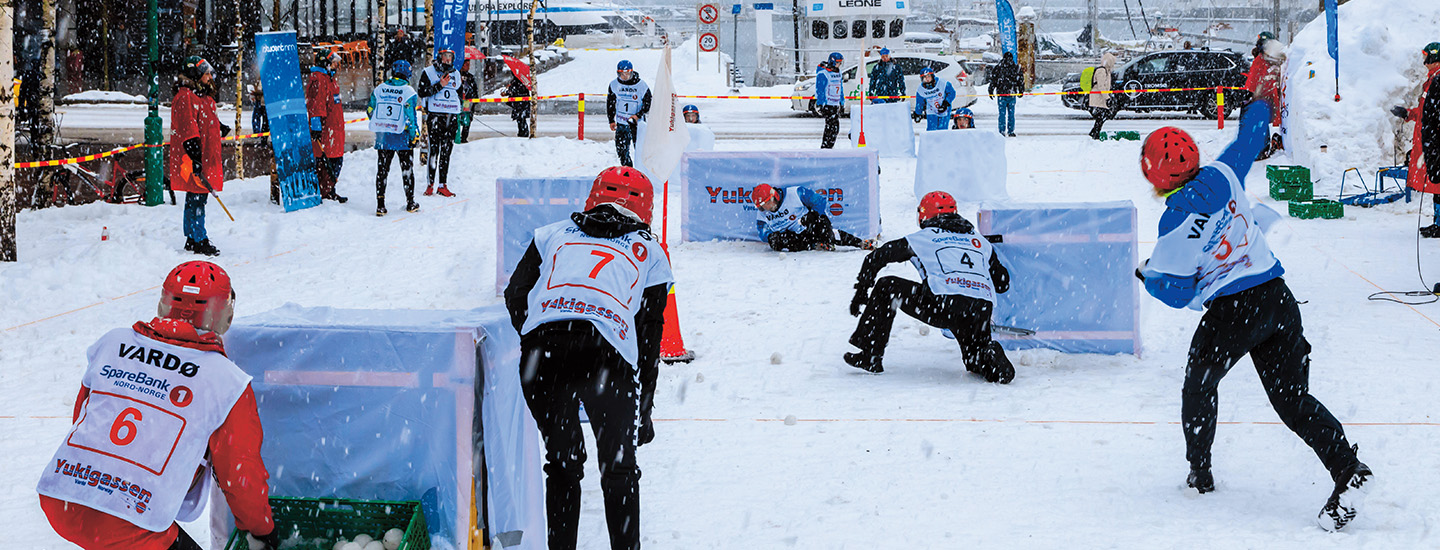For many winters, Ky McMaster traveled 4,350 miles from his home in Alberta, Canada, to Sobetsu, Japan. There, at the foot of a volcano, he prepared for battle.
In the center of a snow-covered court, he and his six teammates faced their rivals. The members of the two teams shook hands and wished each other “Good fight.” Then they retreated to opposite ends of the court and waited for the countdown: “3, 2, 1 . . . Yukigassen!”
Yukigassen means “snow battle” in Japanese. The sport is a cross between dodgeball and capture the flag. There are three ways to win: capturing your opponents’ flag, tagging all of your opponents out with snowballs, or having the most players left after a three-minute match. The team that wins two matches out of three takes the game.
For many winters, Ky McMaster traveled to Sobetsu, Japan. That’s 4,350 miles from his home in Alberta, Canada. Six teammates traveled with him. On a snowy court at the foot of a volcano, they prepared for battle. They shook hands with their rivals. They wished each other “Good fight.” Then they retreated to opposite ends of the court. They waited for the countdown: “3, 2, 1 . . . Yukigassen!”
Yukigassen is a Japanese word. It means “snow battle.” And it’s a sport! The game is a cross between dodgeball and capture the flag. There are three ways to win. You can capture the other team’s flag. You can tag all of your opponents out with snowballs. Or you can have the most players left at the end of a match. Each match lasts three minutes. The team that wins two matches out of three takes the game.

